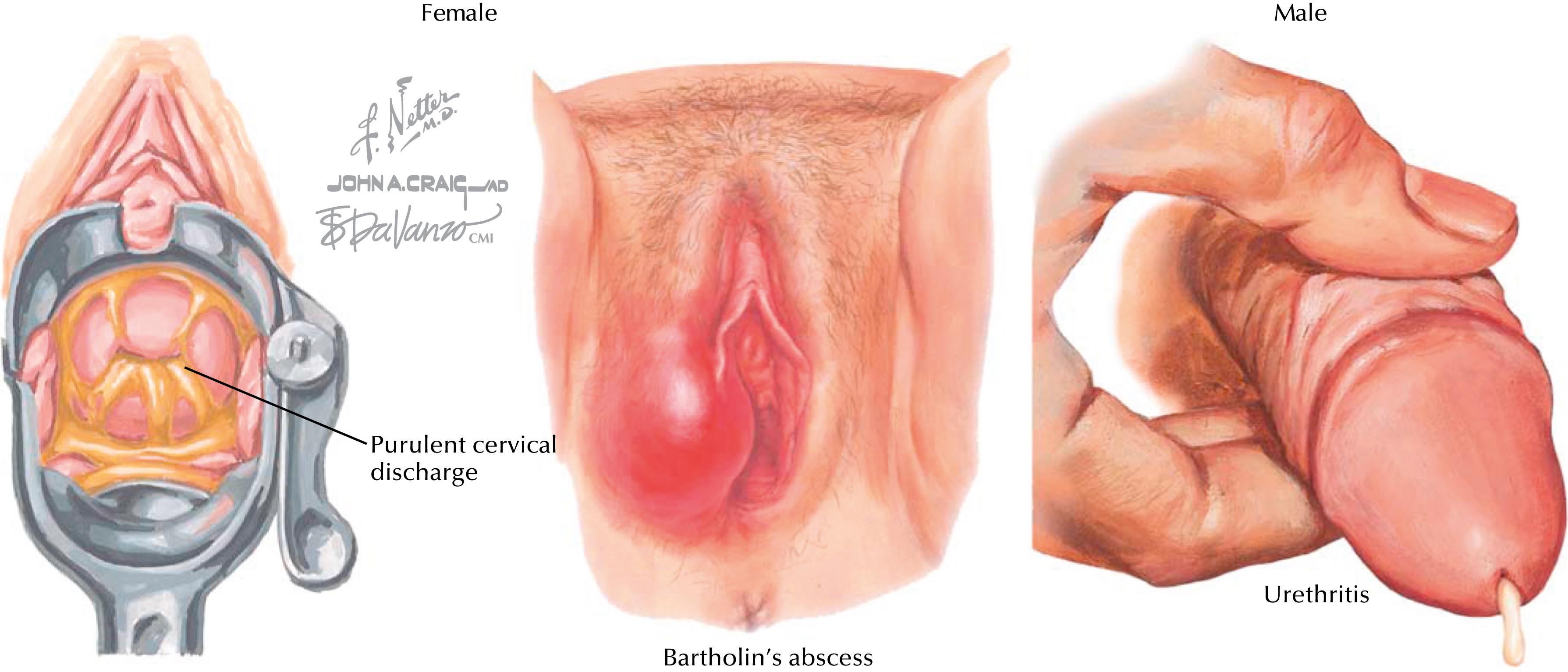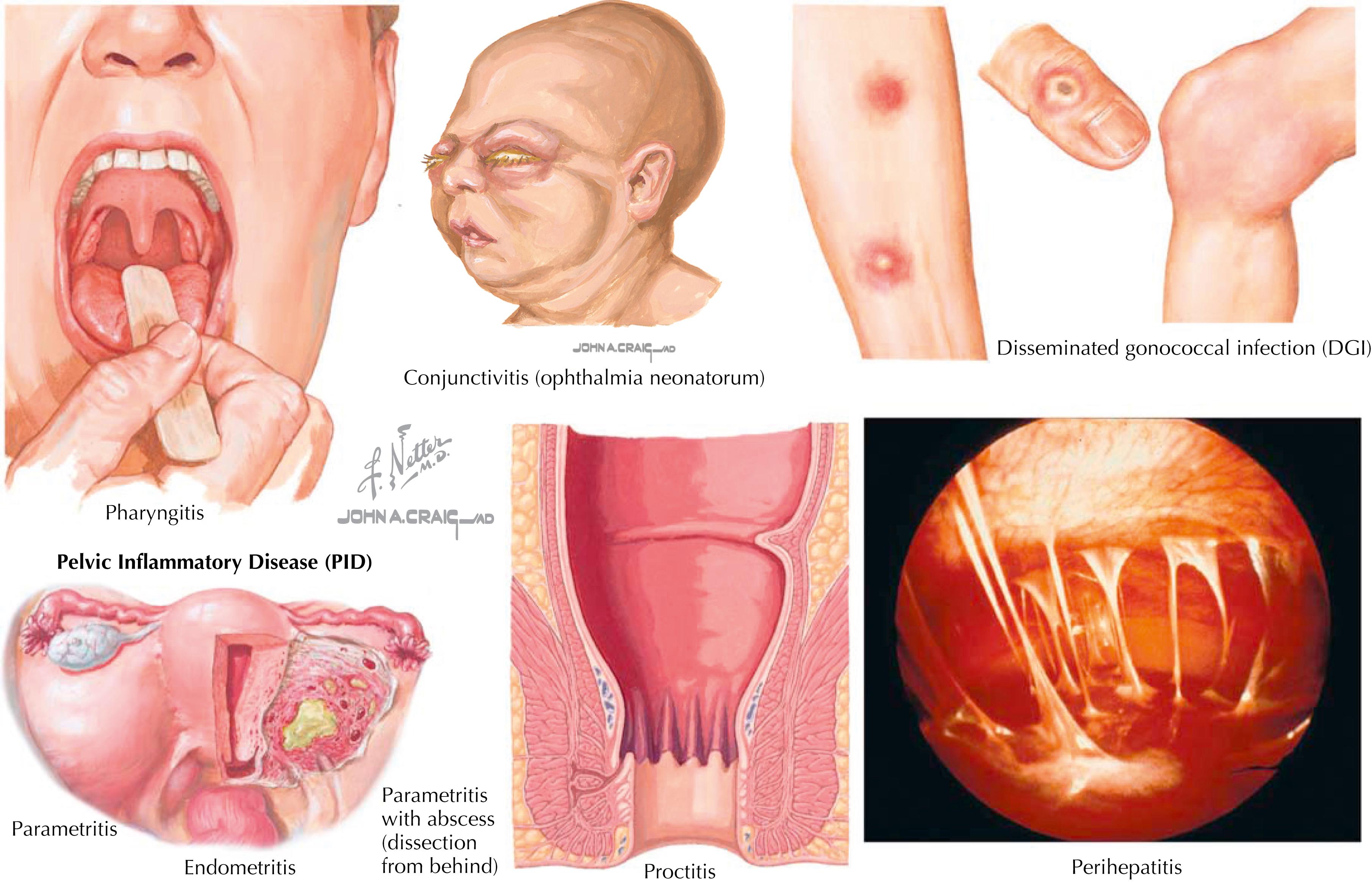Physical Address
304 North Cardinal St.
Dorchester Center, MA 02124
Diagnosis of infection with Neisseria gonorrhoeae (NG), commonly known as gonorrhea, is important because the sequelae of untreated gonorrhea can include pelvic inflammatory disease (PID), perihepatitis, ectopic pregnancy, infertility, and chronic pelvic pain in women and epididymitis or infertility in men. Infection with gonorrhea also increases risk of both acquiring and transmitting human immunodeficiency virus (HIV). Gonorrhea is the second most common notifiable condition in the United States and disproportionately affects minorities, persons of lower socioeconomic status, and those with poor access to medical care. Although gonorrhea can be treated with a single dose of antibiotics, increasing spread of antimicrobial resistance has limited optimal treatment to a single class of drugs, systemic cephalosporins. Diagnosis of gonorrhea in asymptomatic individuals, appropriate treatment, partner treatment, and prevention of gonorrhea are all important strategies for the control of gonorrhea and gonococcal antimicrobial resistance.
A 24-year-old woman presented with fever, nausea, right-upper-quadrant abdominal pain, and a white blood cell (WBC) count of 16,400/μL (3400–10,800 μL). She also reported right wrist and left dorsal foot pain along with a few upper extremity pustules on an erythematous base. Her partner was treated for gonococcal urethritis at a sexual health clinic 3 weeks prior, but her NG and Chlamydia trachomatis (CT) results were negative at that time by nucleic acid amplification test (NAAT) performed at her physician’s office. Due to her negative results, she was not given prophylactic treatment as recommended.
Pelvic exam revealed minimal purulent cervical discharge. Ultrasound of the liver revealed thickening of the gallbladder wall but no gallstones. A computed tomography scan of the abdomen and pelvis revealed hepatic capsular enhancement. Vaginal and pharyngeal swabs were both positive for NG and negative for CT.
The patient was diagnosed with disseminated gonococcal infection (DGI) with clinical findings of left foot tenosynovitis, right wrist arthritis, and perihepatitis (Fitz-Hugh-Curtis syndrome). She responded well to ceftriaxone 1 g IV qd. After 3 days, she had resolution of all clinical and radiographic findings and was discharged to complete the 7-day course of therapy with cefixime 400 mg once daily. Although her partner was asymptomatic at the time of this patient’s diagnosis, he was retreated for reexposure to gonorrhea.
The World Health Organization (WHO) estimates that there are approximately 87 million new gonorrhea infections globally per year. In the United States, gonorrhea is the second most common notifiable condition, second only to chlamydial infection. 583,405 cases of gonorrhea were reported in 2018, and this number represents less than half of all gonorrhea infections because many cases go undiagnosed and unreported. The national gonorrhea rate was 179 cases per 100,000 population, representing an 82% increase since a historic low of 99 cases per 100,000 population in 2009. In addition, when last published, the total direct medical cost of gonorrhea in the United States was $162 million among all ages adjusted to 2010 dollars.
Gonorrhea disproportionately affects adolescents and young adults, African Americans, men who have sex with men (MSM), and individuals living in the South, urban areas, or low-income communities. Racial disparities are greater for gonorrhea than for any other notifiable condition, with reported infection rates among African Americans 7.7 times higher than among whites in 2018. In the same year, 19-year-old women had the highest rate of gonorrhea, at 877 cases per 100,000 population. For 20- to 24-year-old women, the case rate was 703 cases per 100,000 population, representing an increase of 1.5% from 2017 to 2018 but a 32% increase from 2014 to 2018. Last, in men, the gonorrhea rates increased from 119 cases per 100,000 population in 2014 to 213 cases per 100,000 population in 2018, representing a 79% increase.
The clinical presentation of urogenital infection with NG varies for women and men ( Fig. 59.1 ). Gonorrhea is frequently asymptomatic in women, with only approximately 50% of women reporting symptoms such as vaginal discharge, pain or spotting with intercourse, burning with urination, or lower abdominal pain. Although men are more likely to have symptoms, approximately 10% of men infected with gonorrhea are thought to be asymptomatic. Common symptoms for men include urethral discharge, dysuria, and testicular tenderness. Because some strains of gonorrhea are less likely to cause symptoms than others, the proportion of patients whose presentation is symptomatic will vary by population.

Clinical examination findings of urogenital infection with gonorrhea are generally quite similar to those of other sexually transmitted infections. For women, examination findings may include a purulent yellow or green-tinged cervical discharge, inflammation of the cervix, cervical motion tenderness, or Bartholin gland abscess. Clinical examination findings in men include purulent urethral discharge, unilateral testicular tenderness consistent with epididymitis and lymphedema of the penile shaft and/or foreskin. Recent reports have reemerged that describe clusters of patients with urethritis, but with the etiology identified as Neisseria meningitidis.
Infection with NG can also cause infections outside of the urogenital tract ( Fig. 59.2 ). In both men and women, NG can cause proctitis with symptoms such as rectal discharge, tenesmus and pain, or without symptoms. In MSM, it is usually the result of unprotected receptive anal intercourse. However, rectal gonococcal infection in men and women can also be acquired through perineal spread from the cervicovaginal or genital areas or in women from receptive anal intercourse as well.

Pharyngeal infection with NG is generally asymptomatic, although some persons may have sore throat or pain with swallowing. Although the prevalence of gonococcal proctitis and pharyngitis varies by population, in MSM who were attending sexually transmitted infection (STI) clinics in 2018, median urogenital positivity was 7.9%, rectal positivity was 14.8%, and pharyngeal positivity was 12.9%. Women had a median rectal positivity rate of 1.9% and pharyngeal positivity rate of 2.1%. Heterosexual men had a median positivity rate of 3.4% rectal and 1.6% pharyngeal.
Ophthalmic infection with NG can occur in both adults and infants, causing a severe conjunctivitis that can result in corneal damage and blindness (see Fig. 59.2 ). In the infant, symptoms appear approximately 2 to 5 days after delivery, generally with a profuse ophthalmic discharge and lid edema. Symptoms may occur later, however, especially if the infant received ophthalmic prophylaxis at birth. Neonatal ophthalmia can also be caused by infection with C. trachomatis, Haemophilus influenzae, Streptococcus pneumoniae, and Klebsiella pneumoniae. Although gonococcal ophthalmic infection in the newborn is generally through perinatal transmission, gonococcal ophthalmia in an adult is usually through autoinoculation from an individual infected at a urogenital site or via direct contact with infected genitalia or urine. Adult infection may also cause subtler symptoms of conjunctivitis (injected sclera, mild discharge) than are commonly seen in the newborn.
Complicated infection in women most commonly manifests as PID and occurs in approximately 10% to 20% of women with acute gonococcal infection. PID occurs due to infection of the endometrium, the fallopian tubes, or the peritoneum. Women with PID may be asymptomatic or may have lower abdominal pain, fever, and pain or spotting with intercourse. Even if treated appropriately, PID may result in intra-abdominal scarring and adhesions that increase the risk of infertility, ectopic pregnancy, and chronic pelvic pain. PID may be caused by single or polymicrobial infections, including CT , Mycoplasma genitalium, and various anaerobes .
Complicated infection in men can cause penile edema or epididymitis, with characteristic symptoms of unilateral testicular pain, swelling, dysuria, and fever. Because symptomatic men generally seek treatment, very few men progress to develop urethral strictures. Gonococcal infections in men may play a role in male infertility.
Become a Clinical Tree membership for Full access and enjoy Unlimited articles
If you are a member. Log in here